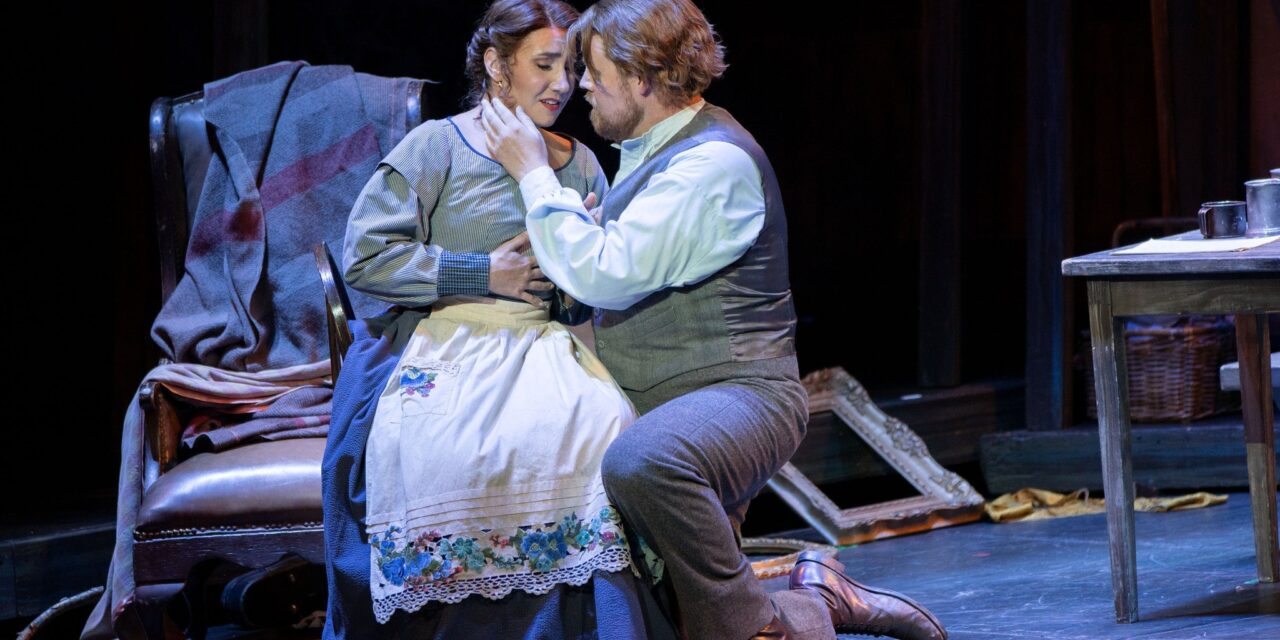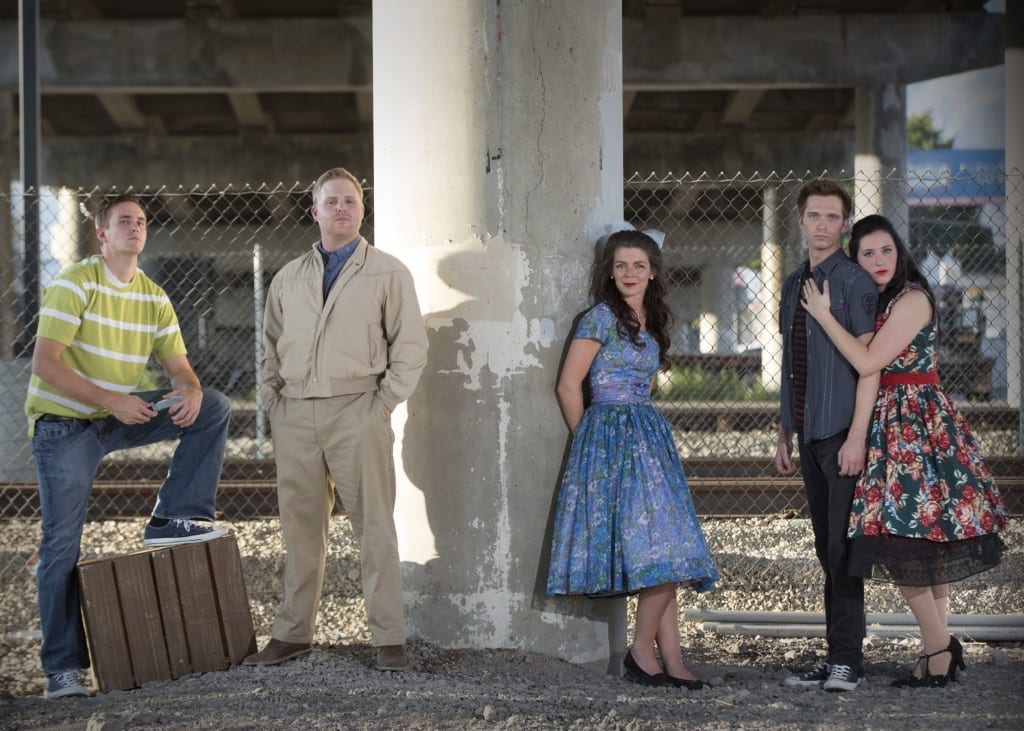SALT LAKE CITY — Since it premiered in Turin, Italy in 1896, Giacomo Puccini’s La Bohème has become the most popular opera ever composed. Its incredible music and universal messages of love, poverty and loss are crafted into a simple, believable story that still feels shockingly relatable and relevant today. In their current production of the classic, Utah Opera has staged a heartbreakingly beautiful version of La Bohème that deserves the attention of Utah audiences.
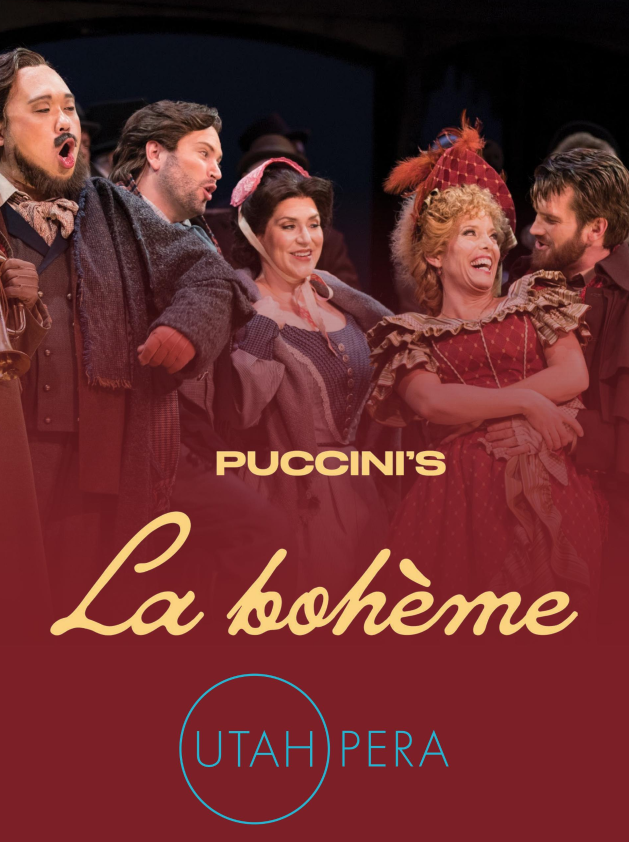
Show closed October 15, 2023.
The plot revolves around two couples falling in and out of love. The characters are the artist class of Paris — but what they lack in wealth, they make up for in passion: for love, for art, for wine, and for life. The opera, with a libretto by Luigi Illica and Guiseppe Giacosa, marked a turning point in the art form toward realism. It begins with a bunch of poor artists in a derelict apartment, burning their own works to stay warm in winter. Their dilapidated upper-level habitation (designed by Peter Dean Beck) featured pillars and posts that went nowhere, peeling plaster, awful wallpaper, and a massive roof window with a missing pane. Even the sloping stage seemed to serve a dual purpose to both give the audience a better view as well as underscore the instability of the home (and, perhaps, the lives of the bohemians who live there as well).
Inhabiting these inhospitable domains were artists Rodolfo and Mimi, played by Christopher Oglesby and Laura Wilde, respectively. The two leads displayed gentle, sweet-sounding voices and beautiful, effective, smooth vibrato. Their vocal control — especially at low volumes — was amazing, and their high notes were spellbinding. Wilde’s voice especially complimented the character; it was like glass — strong, clear, and beautiful.
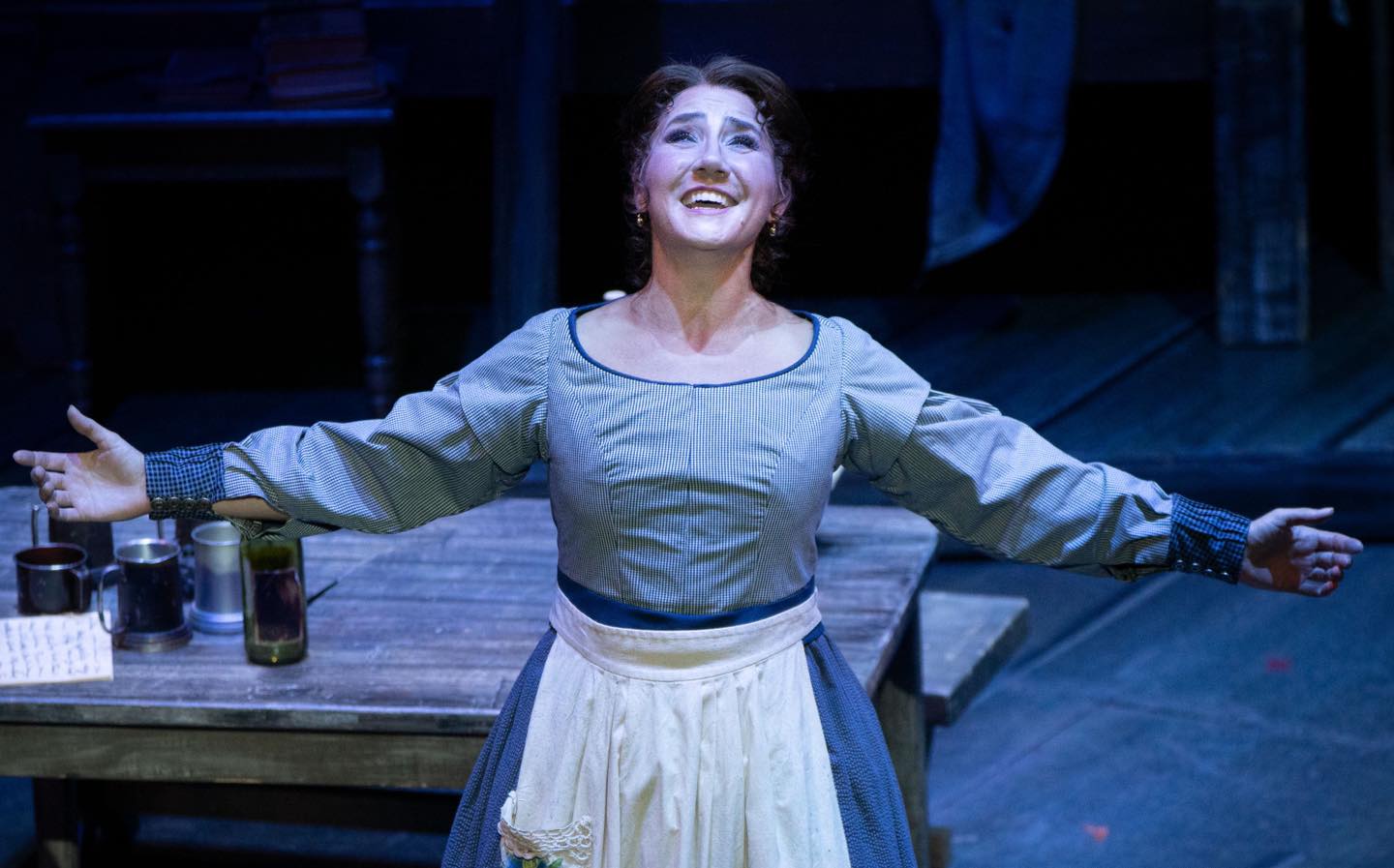
While Puccini can lend itself to oversinging and showing off at the expense of the music, Utah Opera respected the music with superb vocal control and restraint. And this unpretentious singing style contributed to the singers’ gorgeous, masterful delivery. Marina Costa-Jackson was a coquettish and rambunctious Musetta. Not only was her coloratura soprano voice incredible, she got one of the best lines of the show: “I hate lovers who act like husbands.” Among the supporting cast, Danny Belcher stood out in dual roles as the lascivious landlord Benoit and Musetta’s sometime sugar daddy Alcindoro.
Only one moment seemed out of sorts with the leads’ singing. At the end of Act I as Mimi and Rodolfo quietly left the stage, it seemed like they could not hear the orchestra and ended at different times. But this is a minor quibble indeed compared to the smorgasbord of ear candy that filled the rest of the production.
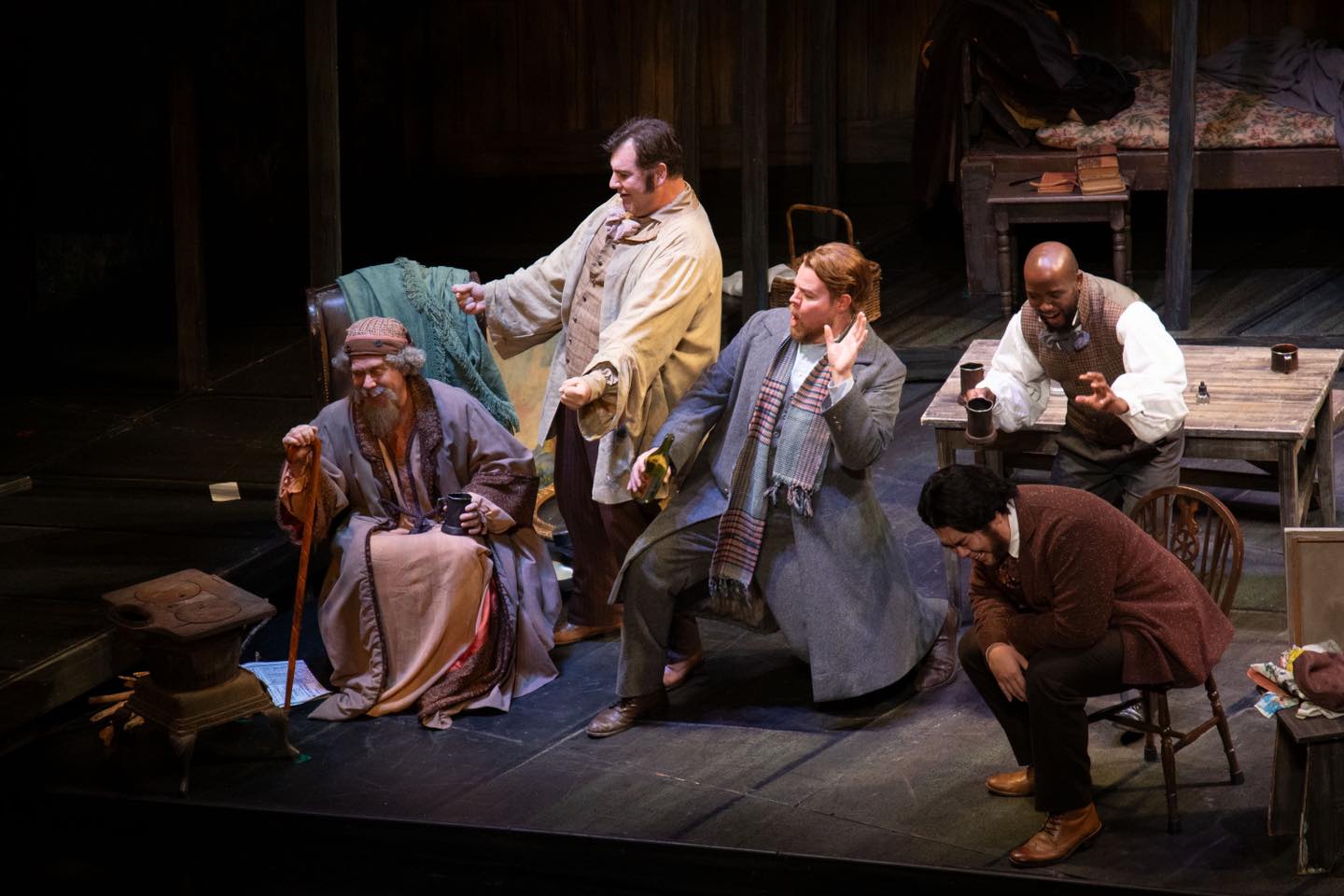
Group scenes were energetic, and director Garnett Bruce seemed to give everyone in the large cast something meaningful to do. The adult chorus, directed by Sharon Bjorndal Lavery, contained a whopping 36 members and was vocally impressive. The diction and cohesion of the female-only segments were particularly memorable.
The children’s chorus, provided by The Madeleine Choir School and directed by Melanie Malinka, had merit but also room for improvement. The children knew the Italian well and were well-prepared with the text, displaying excellent diction, declamation and pronunciation. However, they were late for entrances. Additional rehearsal time practicing entrances, listening for musical cues, and following the orchestra’s tempo may remedy this. The use of pure belting technique rather than bel canto also seemed to limit the potential beauty and dynamics of the children’s sound.
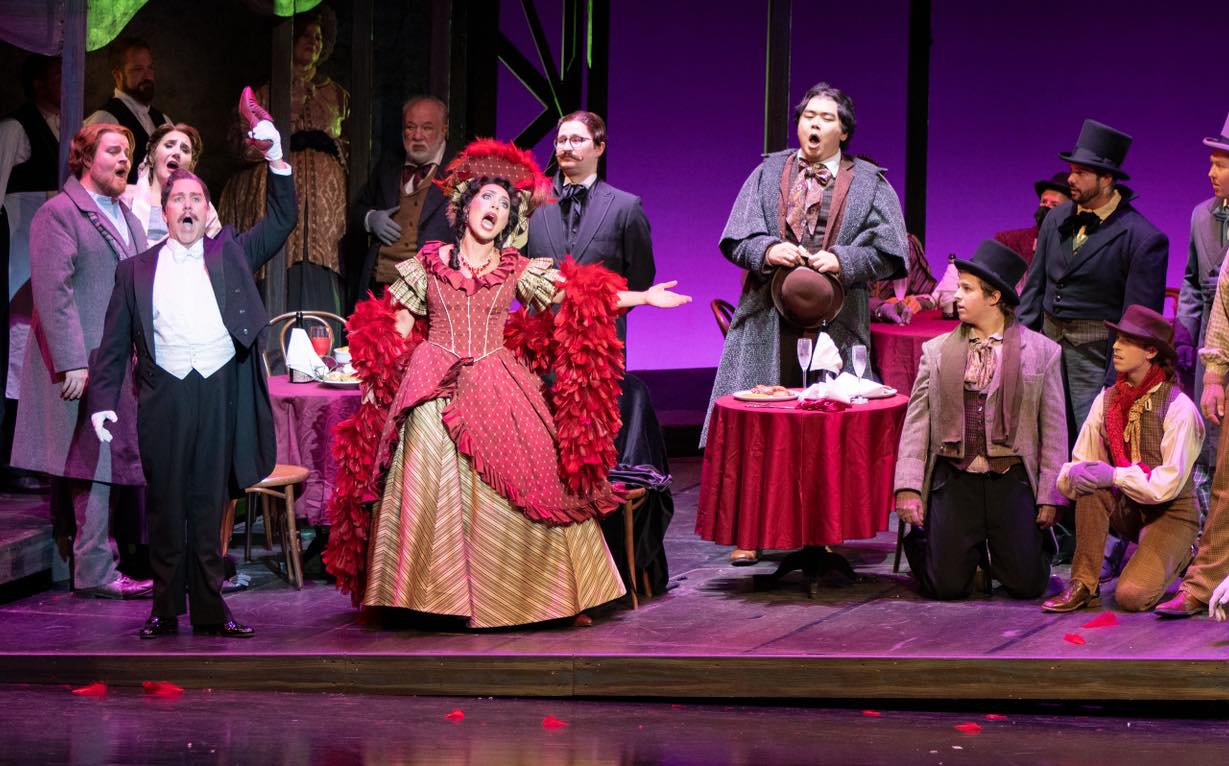
This production played up the humorous aspects of the opera, especially the introduction of the flamboyant vixen Musetta. While this made for an entertaining experience, it may have reduced the ability of Costa-Jackson to fully display her abilities in Musetta’s famous Act II aria. Perhaps an added focus on her vocal performance instead of the character’s ridiculously oversized red scarf could help.
The orchestra, conducted by Robert Tweten, was outstanding: technically sound and responsive to the conductor. James Sale’s lighting design was dominated by winter blues and overall effective at conveying the thematic and emotional message (although the spotlight seemed a little hot on lightly colored costumes). Overall, sets and costumes were simple with muted colors and exercised a restraint that allowed the story and voices to shine (costume design was by Susan Memmott).
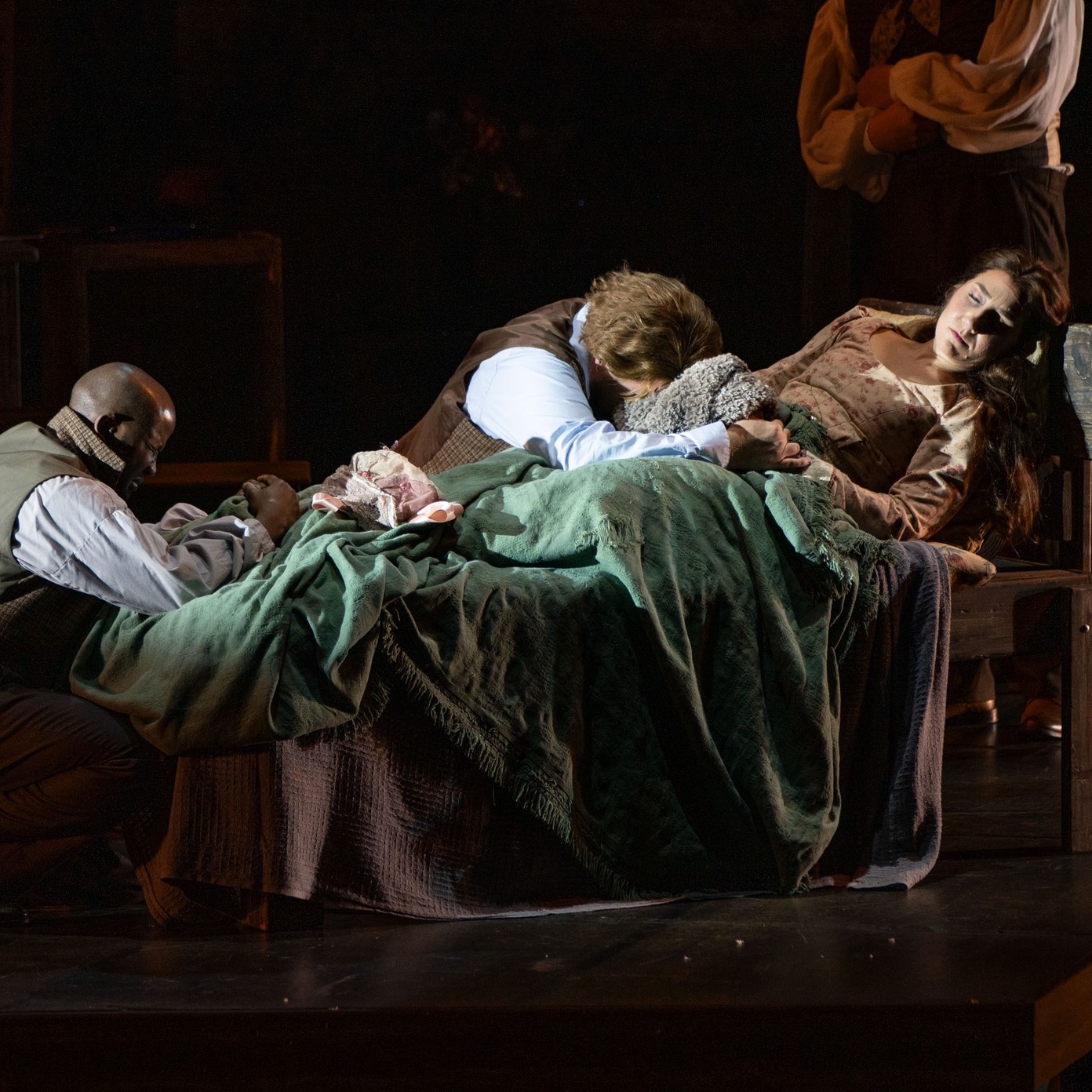
By the end of the production, the combination of fabulous acting, singing and music combined for a truly emotional final scene. It was a heartbreaker, and a testament to the talent of all involved.
It is often said, “Write what you know.” Henri Murger, the writer of the opera’s source material, was a struggling artist, an obscure poet who worked in the seedy side of Paris. And Puccini himself lived in a garret apartment with other artists in his younger days. The authenticity these men lent to “La Boheme” is a powerful reason it has endured as the timeless classic it is. La Bohème feels like it could almost be written today. And in the hands of Utah Opera, it is a shining example of the universality of joy, tragedy, love, loss and emotion.

These reviews are made possible by a grant from the Salt Lake County Zoo, Arts, and Parks program.

